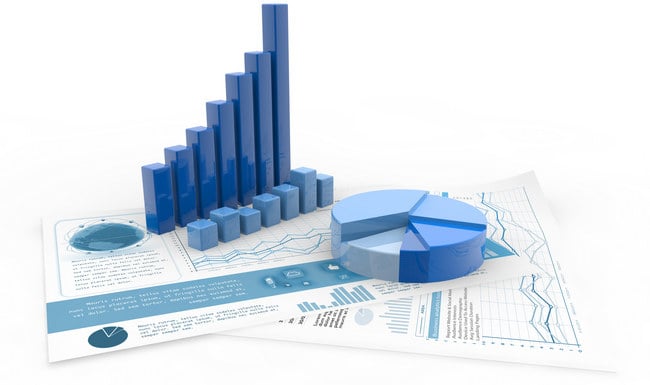
In the last six months, we have seen unparalleled increases and decreases in sales and production volumes. Are you getting enough information (and the right information) from your Financial Statements to make good management decisions in these turbulent times?
The most complex segment of the financial statements for manufacturers and the most volatile in these changing times is the cost of goods sold. The different income statement formats and content significantly impact its usefulness for managing significant volume changes.
Let's look at the various formats of financial statements from using a small manufacturer as an example and review how they might or might not help in decision making.
Income Statement
Tax returns
The income statement on tax returns usually shows “cost of goods sold” as one line item. It often only includes material costs, which does not provide much information for sound decisions. Also, tax returns have tax adjustments that deviate from GAAP and can be distortive to actual operations. This format is the least helpful in decision making.
Basic Financial Statements
Basic income statements will typically breakout material from direct labor and include some, but occasionally not all, factory overhead/burden. This is a good step forward in providing information for decision making. Some pricing or quoting systems include separate calculations for material, labor, and overhead/burden. But in many cases, I find that clients need more information to see the full impact of volume changes.
Enhanced Financial Statements
The first enhancement I recommend is to separate fixed overhead/burden from variable expenses. This is important as volume changes will impact what the overhead rate becomes as fixed overhead becomes a smaller cost per unit as volume increases. I have found many clients use old overhead/burden rates in pricing, which have not been updated by changes in cost structure and latest volumes. To understand the impact of recent volume changes and possible headcount changes due to the current economic environment, this is one of the most significant enhancements to consider.
The second enhancement I recommend is to calculate the actual overhead/burden rate monthly. This will let those creating pricing or quotations know if they are using the correct overhead rate. It also informs management of the immediate impact of volume and cost structure changes on historical rates.
Optimally there would be two rates, one for variable and one for fixed overhead. I often find clients using old overhead rates that have not been updated for the current conditions. With the significant changes in the last six months, it is imperative to monitor the current rates. I am not suggesting changing the standard or quoted overhead rate monthly but rather to be aware of the current impact and to monitor whether the trend indicates a change from the standard rate and a need to adjust the rate used.
The third enhancement includes how much direct labor was absorbed into production/inventory compared to actual payroll. This indicates if your applied or standard labor rate is adequate to cover the actual labor rate. The historical staffing decisions have been upset by the need to retain workers in a slowdown or find experienced workers if volumes increased; the impact on efficiency needs to be understood. Here again, you would not change your applied/standard rate but be informed if the trend shows a permanent change. This variance can have many causes that need to be investigated, such as skill retention in a slow environment, inefficiencies, compensation changes, process or equipment changes, etc.
The fourth enhancement is to identify on the income statement any deviations from the expected material costs. The expected material cost would usually be what is included in the bill of materials. These deviations would identify problems such as price variances (as some materials are in short supply while others are overstocked, both impacting pricing), excess waste, rework, inventory write-offs, obsolescence, etc.
The fifth enhancement provides the above financial information by product line as totals for all product lines combined can “average out” and hide variations between poor performing products from excellent performing products. Many manufacturers are finding some distribution channels (customers) drying up while others are booming. One needs to know the impact of these shifts. With awareness of shifts in the cost of goods sold, evaluation of product lines is needed and down to the customer level.
Balance Sheet
The enhancements thus far have been centered on the income statement, but your balance sheet also needs to provide decision-making information not just balances of assets and liabilities.
Primarily we need to monitor the levels of cash, accounts receivable, and inventory.
Both increases and decreases in sales/production volumes stress cash balances. The best thing to do is to forecast cash requirements continually. This would include profitability, A/R levels, inventory levels, A/P levels, and debt requirements. If this is of interest to you, CFO Selections has some excellent cash management articles for you to review.
Monitoring inventory levels is now more critical than ever. Historical reorder points, economic order quantities, etc. have all changed in the last six months. Again, CFO Selections has published some excellent articles on this subject.
Systems
Most systems will accommodate these financial statement enhancements if they have been set-up properly. The general ledger structure needs to be initially set up with these reporting requirements in mind. Even QuickBooks, if set up correctly, can provide these enhancements to your Income Statement and Balance Sheet.
If you have other thoughts or experiences about getting information from your financial statements, please share with a comment below!
If you need help calculating your projected cash flow, use our Cash Flow Calculator Tool. This powerful tool offers immediate visibility into your current cash flow needs. It provides quick estimates of how COGS changes, buying or selling assets, or obtaining a loan will affect future cash flows. Find out more today!
About the Author
 Roger Johnson has more than 30 years of private and public company experience as CFO, VP of Finance, Controller, and Director of Finance and Administration. His industry background spans manufacturing, distribution, supply chain, and financial services industries. Roger has over 20 years of extensive international experience in Asia and Pacific Rim countries and was an expert Foreign Lecturer in the People's Republic of China for the Central Institute on Finance.
Roger Johnson has more than 30 years of private and public company experience as CFO, VP of Finance, Controller, and Director of Finance and Administration. His industry background spans manufacturing, distribution, supply chain, and financial services industries. Roger has over 20 years of extensive international experience in Asia and Pacific Rim countries and was an expert Foreign Lecturer in the People's Republic of China for the Central Institute on Finance.
Roger received his accounting degree from the University of Illinois and an MBA from Pepperdine University.






